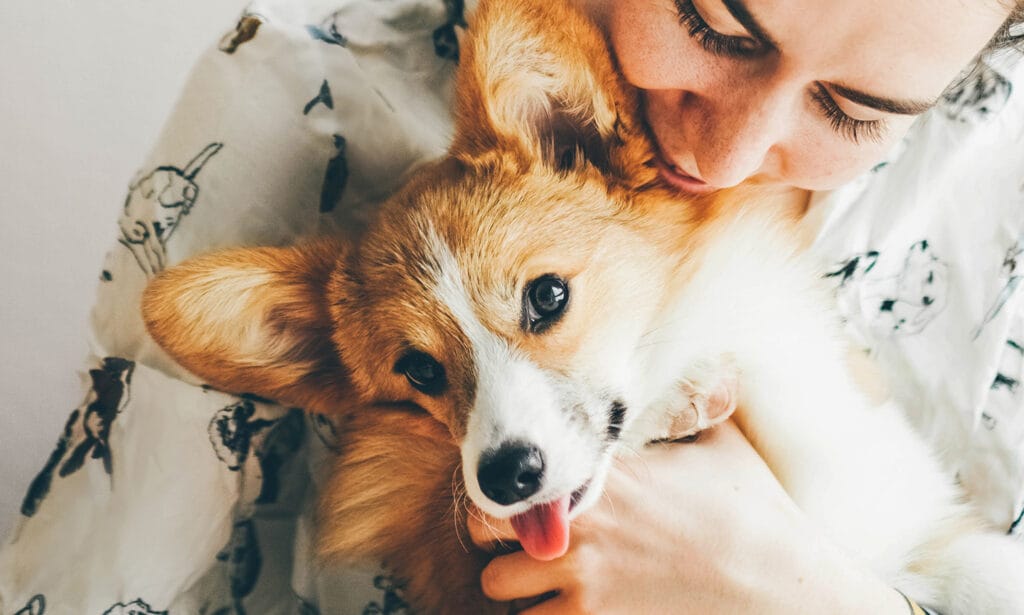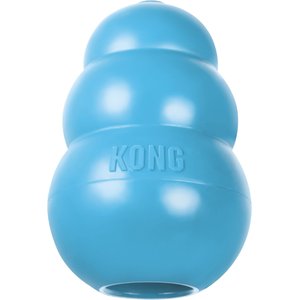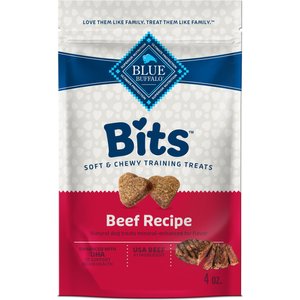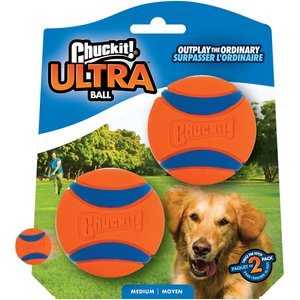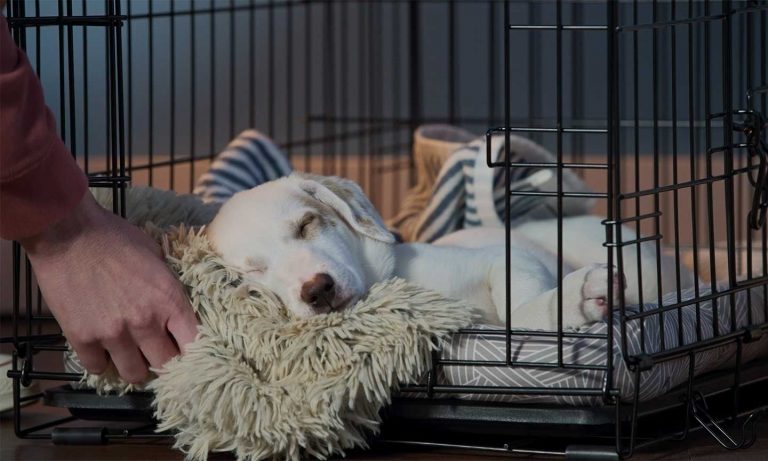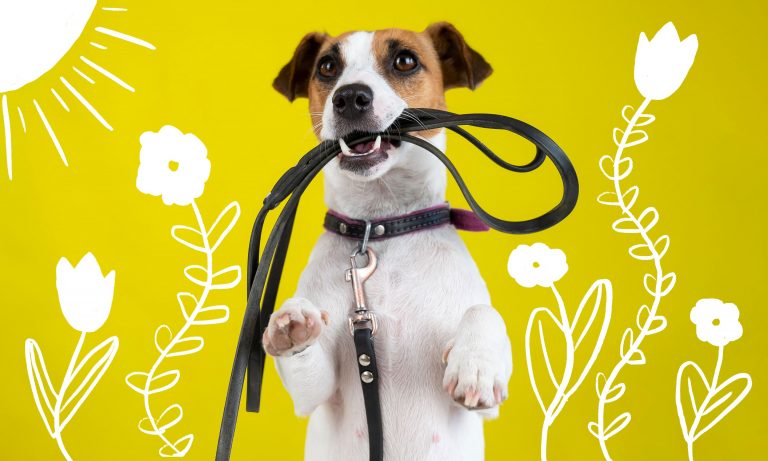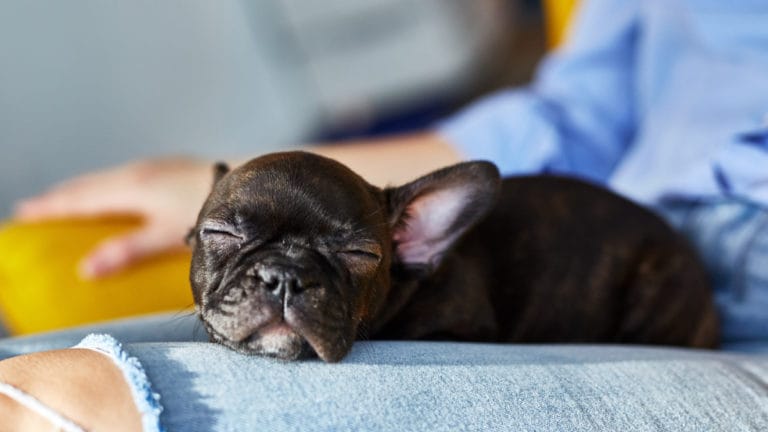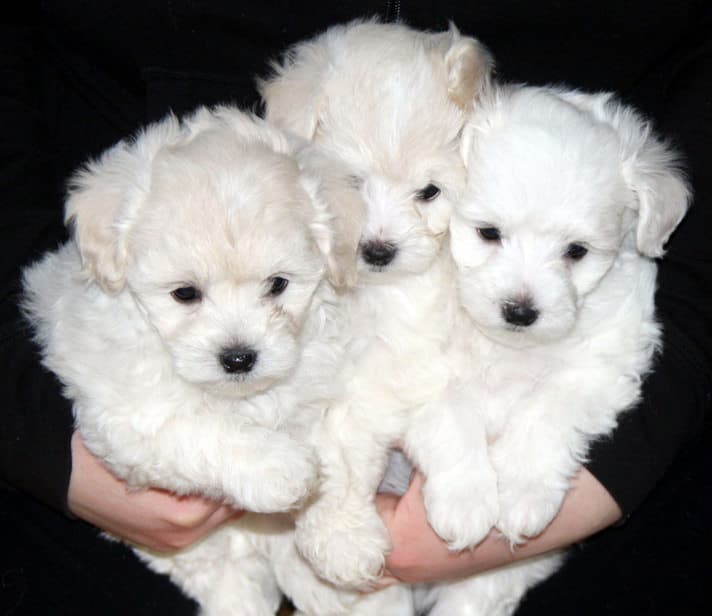Welcoming a new puppy into your life is exciting. There’s nothing quite like puppy breath, puppy snuggles—and that cute little hopping thing puppies do when they’re excited. It also means taking on the responsibility of new puppy training.
Whether this new family member is your first puppy or your 10th, knowing the top mistakes to avoid with a new puppy is a smart move. We talked to two professional dog trainers to help you find success with your new best friend from day one.
10 Mistakes to Avoid with a New Puppy
Khris Erickson, CPDT-KA, based in Ixonia, Wisconsin, has over 20 years working with pet parents and their dogs. Professional trainer and Dogtopia dog expert Liz Dimit, CPDT and ABCDT, based in Phoenix, has over 16 years of professional animal care experience. They know their stuff.
To keep you on the right puppy training track, Dimit and Erickson cover 10 common dog training mistakes you’ll want to avoid as a new puppy parent.
Mistake No. 1: Skipping The Potty Training Primer
Potty training isn’t a favorite task for most pet parents, but it’s necessary. At first glance, it can seem intuitive—however, there’s more to it than just taking your dog outside to do their business.
“Housetraining seems as though it should be easy, but often it’s a lot more difficult than new puppy parents think,” Erickson says.
Here are five common potty training mistakes dog parents tend to make.
Potty Training Mistake No. 1: Inconsistent Scheduling
One of the most common potty training mistakes is not having a consistent schedule.
“Dogs thrive on routine, and inconsistency can lead to accidents,” Dimit says.
So, take your dog outside at the same time each day.
“A good rule of thumb is if you do any activity, follow it up with trips outside and praise,” Dimit says.
Erickson suggests a trip outdoors every 20 minutes when your pup is awake and active.
“Once there have been a few accident-free days, you can gradually increase the time between outings,” Erickson says. “If you start to see accidents, it’s an indication you aren’t taking the puppy out frequently enough.”
Potty Training Mistake No. 2: Reacting Angrily to Pee and Poop Mishaps
“Reacting harshly or punishing your dog for accidents can create fear and anxiety around potty training,” Dimit says.
Use positive reinforcement instead by rewarding your dog when they eliminate outside.
“Ignore accidents, as punishment may not be effective,” Dimit adds.
Potty Training Mistake No. 3: Sending Your Puppy on a Solo Potty Mission
Even if you have a fenced yard, Erickson says all puppy parents should go outside with their furry friend, so you can give your pup a treat and lots of praise within seconds of them doing their business.
“Waiting to give the treat when the puppy gets back in the house reinforces the puppy for coming inside, not for outdoor elimination,” Erickson says.
Potty Training Mistake No. 4: Using Improper Clean-Up Products
Erickson knows potty accidents are part of the new puppy package, so choosing the right products to clean up the mess is critical.
“Using the wrong cleaner may remove the stain, but if there’s any scent detectable to a dog, the puppy may overmark it,” she says.
In layman's terms, if your pup can smell their pee spot, they’re likely to keep adding to it.
Erickson recommends enzymatic cleaners made specifically for potty training oopsies.
“The enzymes break down the chemical component of the waste so that it no longer has an odor,” she says.
Try Nature's Miracle Urine Destroyer Plus.
Potty Training Mistake No. 5: Giving Your Pup Too Much Space
Letting your pup wander the whole house might seem like a caring thing to do, but it can be overwhelming, says Dimit, and lead to more pee and poop accidents.
“Begin by confining your dog to a small, puppy-proofed area, and gradually expand their access as they become more reliable in their potty training,” she says.
You can always use baby gates to keep your dog in a designated area.
Mistake No. 2: Improper Use of Crate
Dog crates are an essential tool for training puppies. However, it’s imperative that new pup parents know how to use them correctly. Don’t make the following mistakes when it comes to using a kennel.
Crate Training Mistake No. 1: Rushing It
Erickson strongly recommends against confining your dog to the kennel without first giving them an opportunity to acclimate.
“I like to start with keeping the door of the crate open and just getting the puppy to go in for a treat that’s been tossed in, and then allowing the puppy to come back out,” Erickson says.
After your doggy gets comfortable with entering the crate on their own, you can shut the door for a brief period of time, increasing the length as they acclimate.
Crate Training Mistake No. 2: Crating Your Pup for Too Long
Once your dog is adjusted to their new kennel, Dimit recommends leaving your pup there for a maximum of four hours, if possible.
Crate Training Mistake 3: Using the Crate as Punishment:
“Never use the crate as a form of punishment,” Dimit says. Doing so can cause your new pup to associate their crate with negativity and lead to them avoiding it.
Instead, make the crate a positive place by using treats, toys and positive reinforcement when introducing your dog to it, Dimit says.
Crate Training Mistake 4: Skipping Crate Training Altogether
“Failing to crate train your dog can lead to behavioral problems and challenges when it comes to managing your dog’s safety,” Dimit says.
Her advice? “Even if you don’t plan to use the crate long term, introduce it to your dog in a positive way to have it as a useful tool if needed.”
Mistake No. 3: Confusing Negative and Positive Reinforcement
“Positive reinforcement involves adding something desirable to reinforce a behavior, such as giving a treat or praise,” Dimit says. “Negative reinforcement, on the other hand, involves adding something aversive to reinforce a behavior.”
When you mix up the two, your new puppy can become confused.
Immediately after your doggy shows a desired behavior, use positive reinforcement by rewarding them with something they enjoy. When they do something you don’t want them to repeat, ignore it.
Dimit notes that not all negative reinforcement is intentional. For example, when your dog barks for your attention, you may well give them attention or even a treat. However, you’re just reinforcing the barking.
To avoid this, pay attention to the behaviors you're reinforcing. Make sure you praise or reward your pup only when they’re engaging in behavior you’d like them to repeat.
Mistake No. 4: Too Much Training, Too Little Playtime
“Overtraining your dog without providing enough play and relaxation time can lead to stress and burnout,” Dimit says.
The solution? Balance your doggo’s activities: training, playtime, exercise and downtime.
Training is important, but the other parts of a dog’s life are also essential to their well-being.
“Dogs need physical activity and mental stimulation, but they also need to rest,” Dimit says.
Mistake No. 5: Incorrectly Socializing Fido
“Proper socialization is essential for puppies and dogs to help them become well-adjusted, confident and comfortable in various situations and around people and other animals,” says Dimit.
Many pet parents aren’t aware of everything that socializing encompasses. They may think socialization is all about introducing their dog to other dogs and humans; and while that’s absolutely true, there’s more to it.
Don’t forget the “environments” portion of socializing your pup, which is “the world they are going to experience throughout their lives,” Erickson says.
For a step-by-step guide on how to effectively socialize your pup, take a look at our Expert Guide to Showing Your Dog the World.
Mistake No. 6: Skipping Basic Obedience Training
Don’t underestimate the importance of teaching your new puppy simple commands like sit, stay and come.
“Start with basic obedience training to lay a solid foundation for more advanced skills,” Dimit says. “These commands are important for your puppy's safety and well-being.”
Check out our Essential Guide to Basic Obedience Training.
Mistake No. 7: Expecting Too Much Too Soon
When it comes to how quickly your new puppy can learn, having unrealistic expectations can lead to frustration.
“Be patient and recognize that puppies have limited attention spans. Keep training sessions short and frequent,” Dimitt says.
Erickson says new pups learn more effectively when training sessions are limited to a few minutes at a time, a few times each day. One 20- to 30-minute training lesson can wear out a puppy and interfere with their ability to focus.
Mistake No. 8: Not Providing Chew Toys
Failing to give your new puppy appropriate chew toys usually doesn’t end well, with boredom and destructive chewing as potential outcomes.
“Offer a variety of safe and suitable chew toys to keep your dog mentally and physically engaged,” Dimit says. “Rotate them regularly to maintain interest.”
Here are a couple popular chew toys among pet parents:
Mistake No. 9: Forgetting Training Treats
Praise can go a long way, but don’t underestimate the power of a tasty treat. Training treats are compelling incentives, and Dimit says skipping them can make dog training less effective.
“Use small, tasty training treats to reinforce good behavior during training sessions,” she says. “Ensure the treats are enticing and easy to consume quickly.”
Mistake No. 10: Discounting the Importance of Training Classes
New pet parents may opt out of training classes because they’ve successfully trained dogs in the past. Don’t do this, Erickson says.
“Professional dog trainers enroll in puppy classes when they get a puppy, even though they certainly know how to train a dog,” she says.
This is because training classes not only offer a fantastic opportunity for socialization, but they also help nip problematic behaviors in the bud before they become an even bigger challenge down the road.
14 New Puppy Tips from Trainers
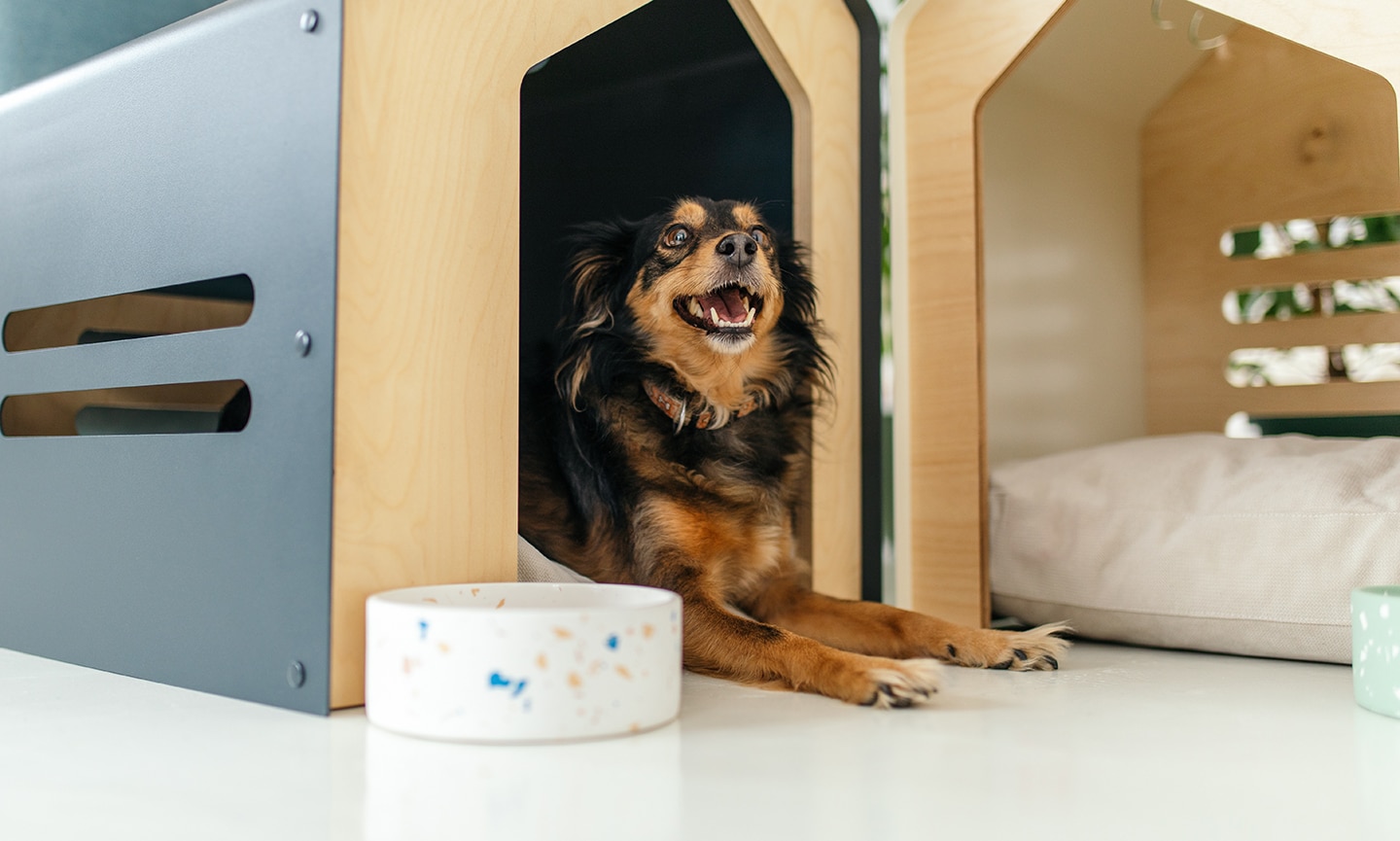
Adding a four-legged family member means the two-legged ones must take on additional responsibilities. We asked our dog trainer experts to share essential new puppy tips. Consider these 14 to-dos a sort of new puppy checklist.
1. Puppy-Proof Your Home
If you haven’t already done so before bringing your pup home, it’s time to puppy-proof. Remove hazards and any items that your puppy could chew on or ingest, Dimit says.
Much like babies, puppies will put just about anything in their mouths. Don’t forget dangers like plants that are poisonous to dogs.
View our Guide to Puppy Proofing Your Home.
2. Create a Day-One Plan
Make your new family member’s first day and first night at home as comfortable as possible to start things on the right note.
Create a cozy, safe place with a dog crate and dog bed, and provide puppy-friendly toys.
Gradually introduce your new pup to their environment. Don’t worry if your furry friend experiences some initial anxiety. That’s normal! Just be patient and reassuring, Dimit says.
3. Schedule the First Vet Visit
Within a day or two of bringing your new puppy home, schedule their first vet visit.
Your vet can perform a health checkup; administer and schedule vaccinations; discuss preventative care and more, Dimit says.
4. Begin Vaccinations
Speaking of the first vet visit, this is when your vet can recommend an appropriate vaccination schedule to protect your pup from common diseases.
According to Dimit, at the bare minimum, every dog should have the following vaccines:
- Rabies
- Canine Distemper Virus (CFV)
- Canine Parvovirus (CPV or parvo)
- Canine Adenovirus-2 (CAV-2) – infectious hepatitis
If your dog will be venturing out with you or you live in a part of the country where other diseases are prevalent, additional vaccines may be advisable. And don’t forget to stay up to date on booster shots!
Get the full scoop in our Dog Vaccination Guide, and download our Puppy Vaccinations Tracker printable.
5. Begin Heartworm and Parasite Meds
Heartworm and parasite medications are part of an important preventive-care routine for many dogs.
Ask your vet which meds best fit your new pup’s needs, and create a calendar reminder to give them their medication each month, Dimit says.
6. Register Your Pup and Order an ID Tag
Look up the authority that governs pet registration in your area and register your new puppy.
Also ensure your doggy always wears an ID tag with your contact information, Dimit says.
You can order one online and attach it to your puppy’s collar as soon as it arrives.
7. Microchip Your Best Friend
Talk to your vet about microchipping your new puppy, Dimit says. This permanent identification will help your dog get back to you in the unfortunate event they’re ever lost.
Once your dog is chipped, register an account online with the microchip provider, and always ensure your contact info is current.
Fun fact: Some newer microchips can take your dog’s temperature!
8. Establish a Dental Care Routine
A toothbrush and a tube of toothpaste aren’t only for humans! Your dog’s pearly whites need care, too.
Begin a doggy dental care routine early by brushing their teeth regularly. Poor dental hygiene is one of the leading causes of health issues in older dogs. Good oral hygiene habits in the early years lead to healthier adult dogs in the later years, Dimit says.
9. Pick the Perfect Puppy Food
Not all puppy food is created equal. It’s important to select a high-quality dog food that meets your puppy's nutritional needs, Dimit says.
Talk to your vet for advice on the best puppy food choice for their age and breed.
10. Select the Right Food Bowls and Water Bowls
Don’t forget that your puppy needs dishes!
Stainless steel food bowls and water bowls are excellent choices because they’re easy to clean, durable, and rust- and corrosion-resistant. Stainless steel is also less likely to harbor bacteria than plastic, Dimit says.
Check out our New Puppy Shop, where you’ll find food and water bowls, plus everything else you need for your newest family member.
11. Consider Pet Insurance
Being a pet parent isn’t cheap! Vet bills—both expected and unexpected—can add up fast.
Consider purchasing pet insurance to help with veterinary costs, Dimit says. Research and choose a plan that fits your needs and budget.
Learn more about pet health insurance.
12. Keep Your Pup Moving
Ensure your new puppy gets the proper exercise tailored to their age and breed. Consistent physical activity plays a vital role in your furry friend’s well-being and overall happiness, Dimit says.
Regularly participating in daycare can be a terrific way for your puppy to enjoy playtime and begin the socialization process with other dogs.
Fun fact: Daycare dogs take around 30,000 steps a day, while pooches who stay home only average 8,000, Dimit says.
13. Maintain a Watchful Eye on Your Doggy
It seems simple, but it’s worth saying: Always supervise your puppy to prevent accidents and keep them safe, Dimit says.
14. Consider Professional Dog Training Classes
Last but not least, think about investing in professional dog training. Ericson says it’s easier to address undesirable behaviors and bad habits when a puppy is young.
Working with a skilled dog trainer can help you learn how to effectively use behavior modification to overcome these struggles.
When seeking out a trainer, consider the following:
- Trainer reputation: Read reviews and ask for recommendations.
- Training facility: Visit first!
- Type of training: Positive reinforcement-based training classes are best.
Share:
